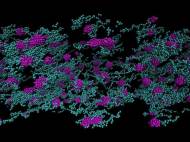Where art and technology meet – materials science and music
 An interdisciplinary team of researchers consisting out of civil and environmental engineers, mathematicians, biomedical engineers and musical composers from MIT, Tuffs University and Boston University, cooperated in order to develop a novel method that can be used to synthesize new variants on silk’s natural structure as well as for making further improvements in the synthetic silk production.
An interdisciplinary team of researchers consisting out of civil and environmental engineers, mathematicians, biomedical engineers and musical composers from MIT, Tuffs University and Boston University, cooperated in order to develop a novel method that can be used to synthesize new variants on silk’s natural structure as well as for making further improvements in the synthetic silk production.
The team used a systematic approach to devise the method by starting with computer modeling of the underlying structures that give the natural silk its unusual combination of strength, flexibility and stretchiness. Aside the fact they used systematic approach rather than trial-and-error, the researchers figured out how to translate the details of the artificial silk’s properties into musical compositions.
Previous research by MIT’s Markus Buehler led to conclusion that fibers with a particular structure — highly ordered, layered protein structures alternating with densely packed, tangled clumps of proteins (ABABAB) — leads to silk’s exceptional properties. For this initial attempt at synthesizing a new material, the team chose focus at patterns in which one of the structures occurred in triplets (AAAB and BBBA).
One of the new materials produced very strong protein molecules — but these did not stick together as a thread. The other produced weaker protein molecules that adhered well and formed a good thread. The researchers concluded that they need to combine these protein molecules in order to create a strong and well-connected network at a larger scale.
David Kaplan, Tufts University chemical and biomedical engineer, modified silk-producing genes to produce these new sequences of proteins. Joyce Wong, Boston University bioengineer and materials scientist, created spinneret – a microfluidic device that mimics the spider’s silk-spinning organ in order to produce silk.
The team used help from composer John McDonald, a professor of music at Tufts, and MIT postdoc David Spivak, a mathematician who specializes in a field called category theory, in order to describe the protein structures by finding a way to translate the details of the artificial silk’s resulting properties into musical compositions. They matched strong but useless protein molecules with music that was aggressive and harsh, while the ones that formed usable fibers were matched with softer and more fluid sounds.
According to Buehler, combining materials modeling with mathematical and musical tools could provide a much faster way of designing new biosynthesized materials, replacing the trial-and-error approach that prevails today. The team is now producing several more variants of the material to further improve and test their approach.
This method can be employed under environmentally benign, room-temperature conditions in order to produce other materials or even in tissue engineering where it could lead to creation of building block which could be used in scaffolds for replacement organs, skin, or blood vessels.
For more information, read the article published in the journal Nano Today: “Materials by design: Merging proteins and music”.









Leave your response!